Unhealthy animals make for unhealthy food. Poor health is usually caused by missing nutrients, toxins, and infections. Naturally, food from an unhealthy animal has a higher chance of being malnourishing, toxic, or infectious.
Our industrial food production system relies on genetically disturbed animals raised in crowded conditions and fed unnatural diets.
Fortunately the movement to healthier food production has been gathering steam recently. In most cities, it’s possible to meet local farmers at farmers markets and obtain naturally raised meat and vegetables.
We’ve been meaning to learn more about local farms and their food production methods. On Saturday, we joined the Livin’ Paleo in Boston group on a visit to Green Meadows Farm in Hamilton, Massachusetts. Green Meadows Farm was founded by General George S. Patton and is still owned by one of his heirs. It is managed by Andrew and Diana Rodgers. We were delighted to meet Diana at the Ancestral Health Symposium, and have looked forward to visiting her farm. I thought I’d share some photos and information from our visit.
Chickens
The Rodgers keep a pen of Cornish Rock chickens as an educational exhibit. Cornish Rocks supply the great majority of the chicken consumed in the United States; yet they are a genetically disturbed breed that develops arthritis by age 10 weeks and commonly dies young or fails to reproduce.
They are characterized by extraordinarily rapid growth and large breasts – so large that they have difficulty maintaining their balance and walk awkwardly. The breed doesn’t like to walk and if given food and water and if their poop is removed, they will happily live their whole lives in one spot.
The Rodgers force their Cornish Rock hens to walk by placing their feed a short distance from their coop:
Virtually all supermarket chicken meat is obtained from this breed, and even though their unaided growth is extremely rapid, producing a full-size chicken in 6 to 8 weeks, I have read that growth hormones are sometimes injected to accelerate growth further.
The Rodgers keep other, healthier breeds of chicken:
These are working animals. The farm is actually an organic vegetable farm, and the animals are used to clear and fertilize vegetable plots. They do sell their chickens in the fall, but apparently the healthier breeds of chicken produce a stringier meat that most Americans don’t care for.
Pigs
Currently only 20 acres of the 230 acre farm are in cultivation. The rest has been occupied by forest, or is too wet to farm. The Rodgers are steadily trying to clear woodland to create new vegetable plots, but it is a slow process.
They begin by confining pigs to a wooded area using electrical fences. The pigs root around, clearing underbrush and weakening the root systems of the trees. After a season of pig exposure, the trees can be cut down more easily.
Here you can see some pigs:
The orange electrical fence is on the left.
Sheep
After the trees have been cut down, it still takes at least a year – generally more – to naturally break down roots and prepare the field for plowing. Sheep and chickens are the animals that effectively turn a former woodland into a fertile, root-free vegetable field.
Here are some sheep in a plot that is currently occupied by clover, a legume that restores nitrogen to the soil:
Here is a sheepdog in training:
If you ever find yourself on Asbury Street in South Hamilton, Mass., here’s the farmstand to look for:
Livin’ Paleo in Boston Group
Here is a photo of our tour group:
Diana Rodgers is on the far right, Andrew Rodgers (fifth from the left) is visible only as a head. I’m in the red shirt and green shorts sixth from the right; Shou-Ching was the photographer. I won’t try to name everyone but the organizers of the tour, Shilpi and Amit Mehta, deserve special thanks; they are in the back row slightly left of center.
Joel Salatin, Michael Pollan, and Farmageddon
Joel Salatin is a hugely entertaining family farmer in Virginia who has deservedly become famous. Here’s a short video introducing him – this is from the documentary “Fresh”:
For a description of how Salatin’s Polyface farm operates, there may be no better source than Michael Pollan:
Unfortunately, the regulatory and legal climate is actively hostile to local farms. Here is the trailer to the documentary “Farmaggedon”:
Farmageddon – Movie Trailer from Kristin Canty on Vimeo.
A Canadian dairy farmer is currently on a hunger strike protesting laws restricting the sale of milk, and in a similar Wisconsin case Judge Patrick J. Fiedler recently ruled that “Plaintiffs do not have a fundamental right to produce and consume the foods of their choice.” So these are active issues.
Shou-Ching and I strongly support the liberation of food production and consumption from repressive regulations, and recommend checking out your local farms. In our experience, the food is better than that at Whole Foods, and often cheaper. I know we have a number of farmers among our readers; please, let us know if there is anything we can do to promote your businesses.







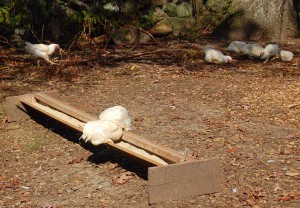
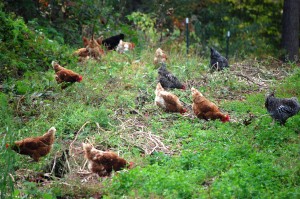
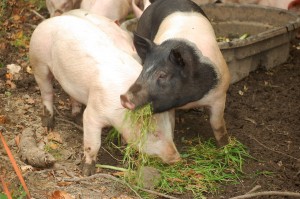
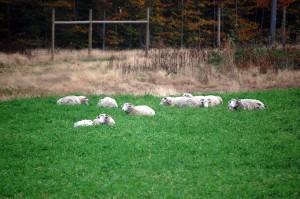
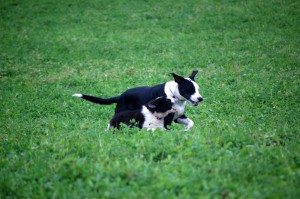

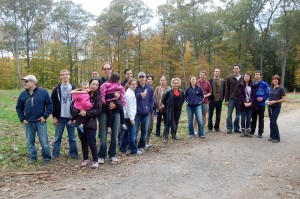
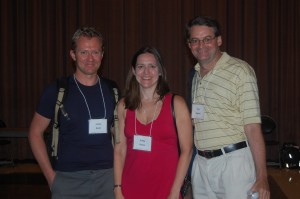




Recent Comments